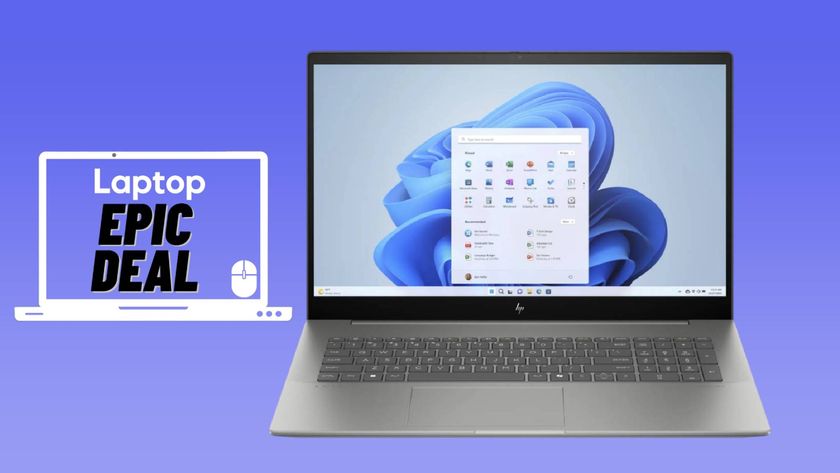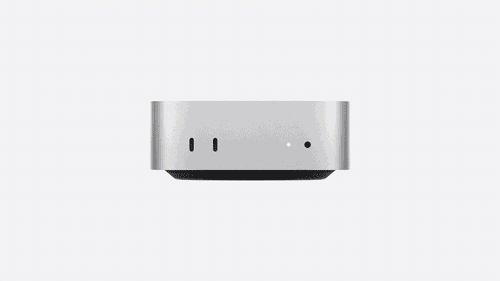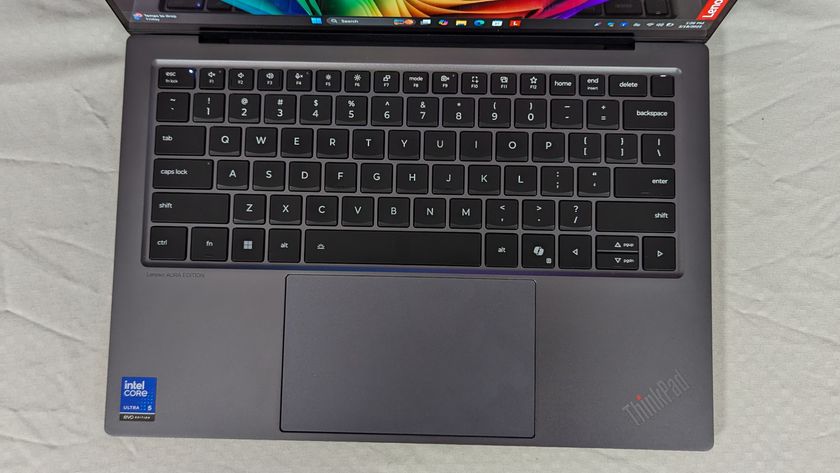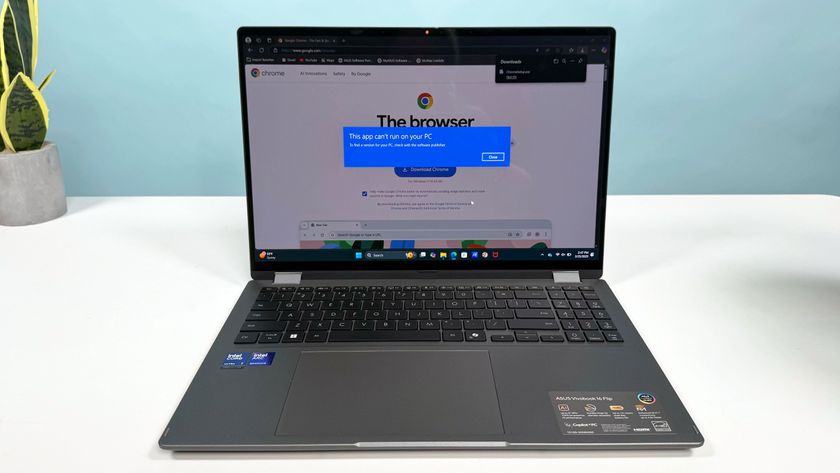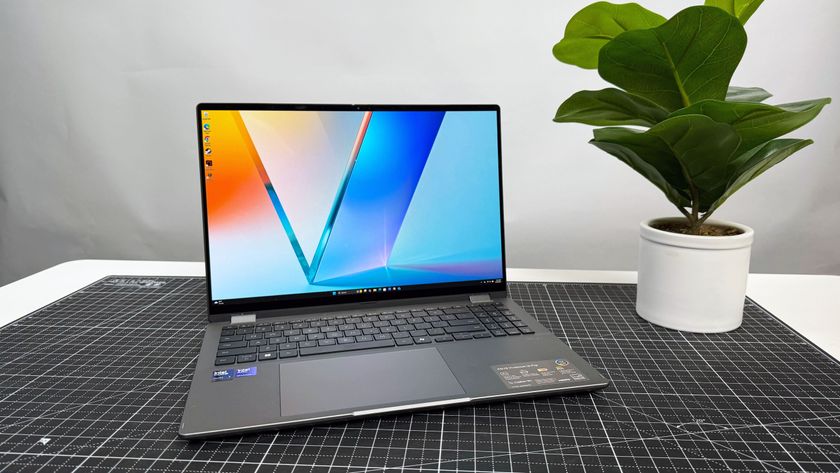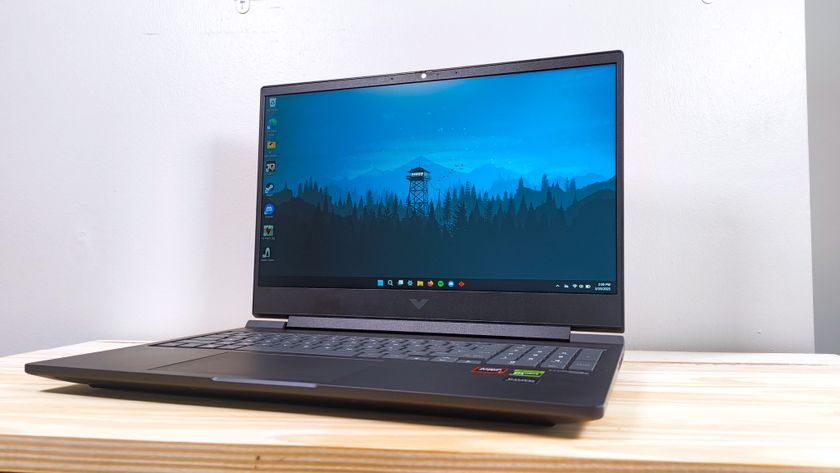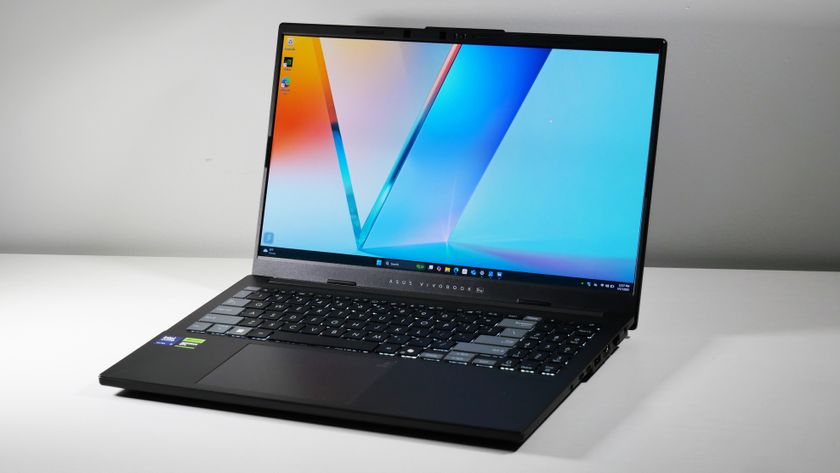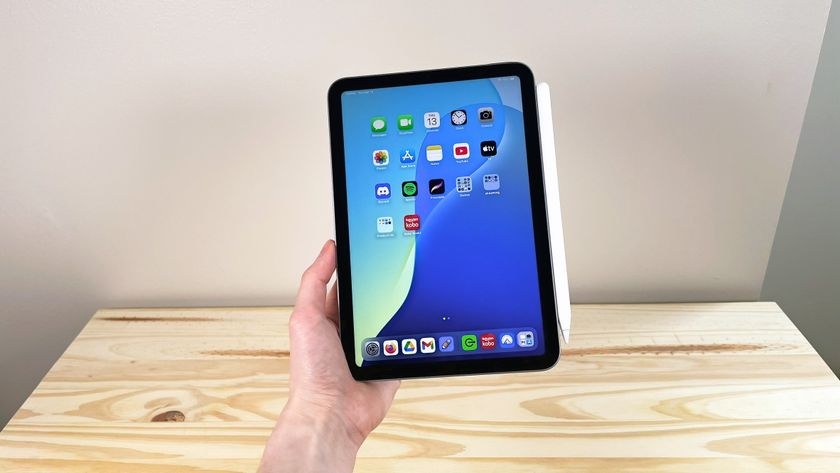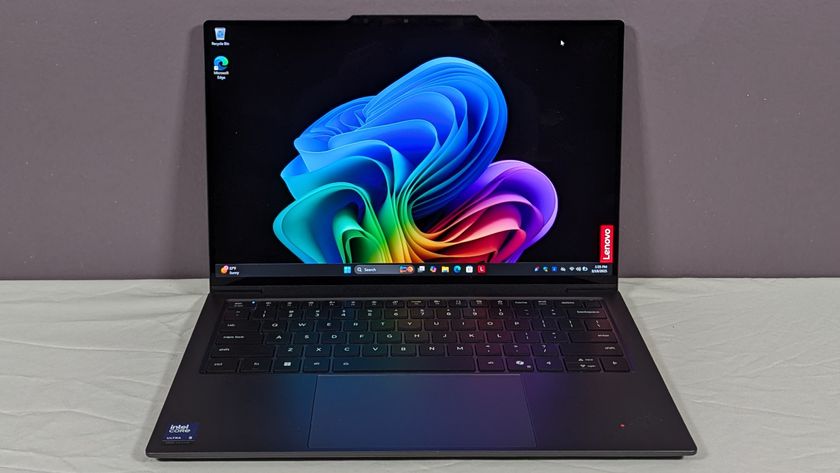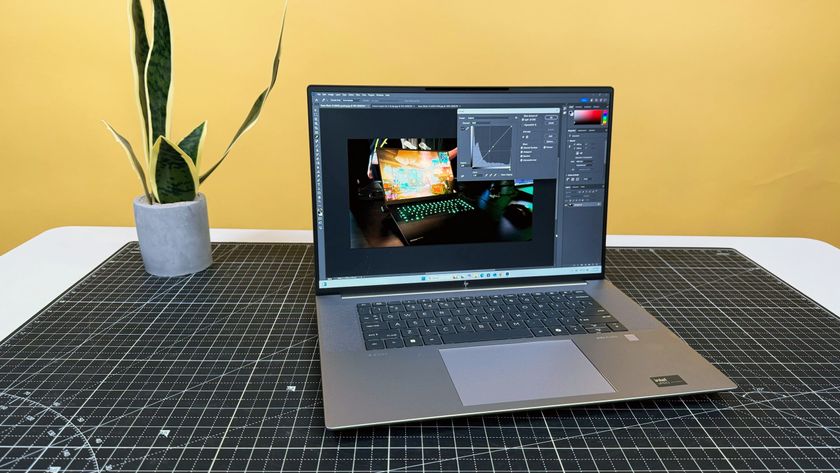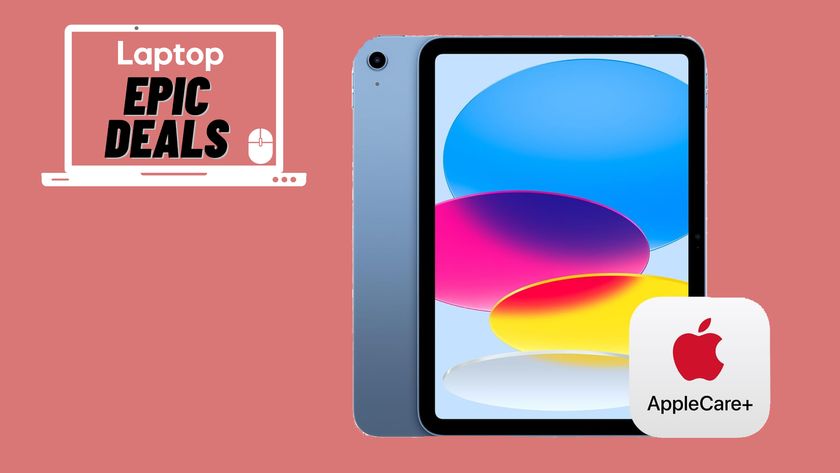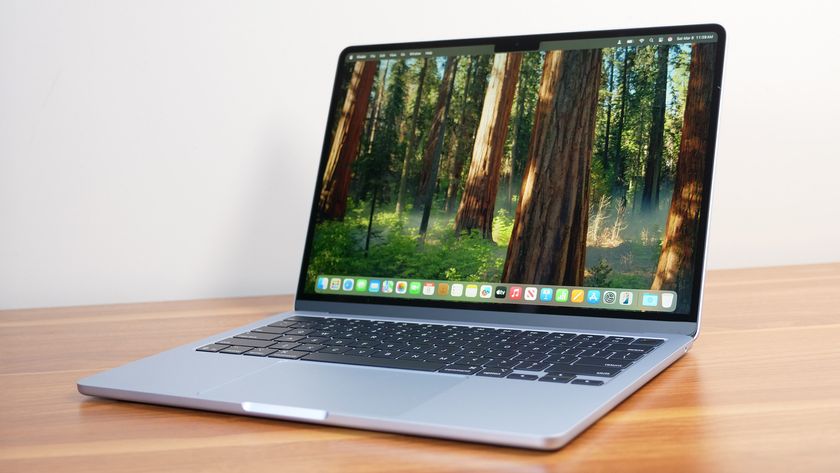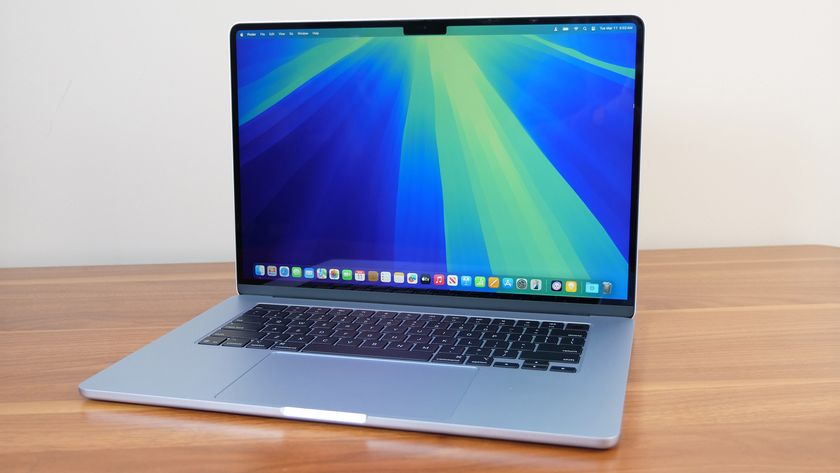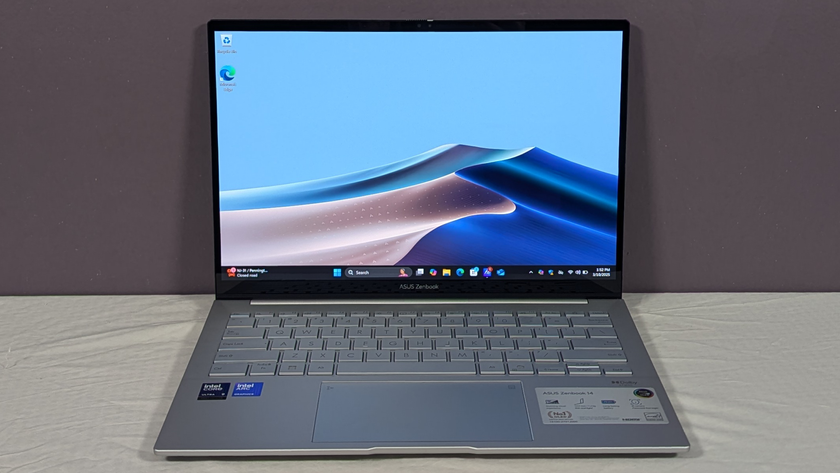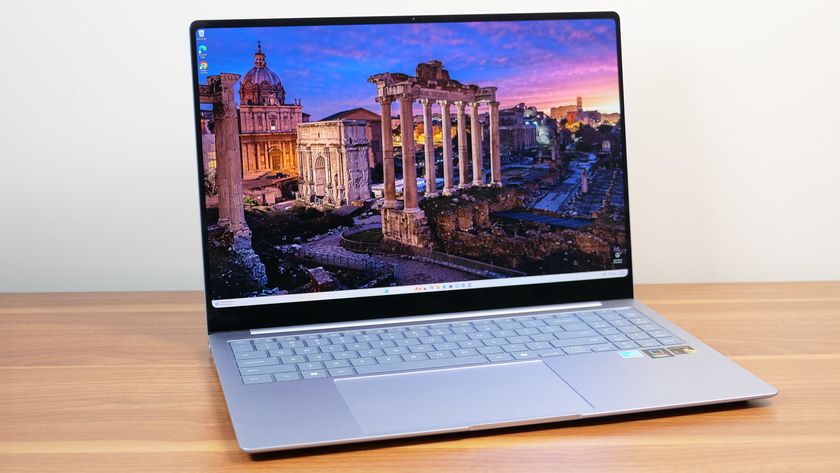Laptop Mag Verdict
HP's latest consumer netbook offers an attractive design, improved keyboard and (limited) HD video playback for a good price.
Pros
- +
Roomy, responsive keyboard
- +
Clean design
- +
Large touchpad
- +
Good HD video playback
- +
Strong software bundle
Cons
- -
Bottom gets hot
- -
Slow boot time
- -
Shorter battery life than competition
- -
Broadcom chip doesn't yet improve Flash playback
- -
Below-average performance
Why you can trust Laptop Mag
If you asked us in the past if we like HP's netbooks, we'd tell you, "It depends." We love the business-focused Mini 5102, for example, because of its great keyboard, sturdy design, and over 10 hours of endurance with its 6-cell battery. But the company's consumer 10-inch netbooks haven't measured up to the competition from ASUS, Acer, and Toshiba. HP has put its best foot forward with the Mini 210 ($384 as configured), which takes Intel's Atom N450 processor and wraps it in a sleek new design with an improved keyboard. This configuration also pairs a high-def screen with Broadcom's Crystal HD Enhanced Media Accelerator for HD playback. However, this netbook doesn't last as long on a charge as other Pine Trail netbooks. The bottom also runs warm, and its touchpad requires a bit of a learning curve. Should you make this Mini yours?
Design
The 10.5 x 6.9 x 1.1-inch Mini 210 resembles the business-centric Mini 5102 more than its consumer-focused predecessor, the Mini 110. And that's a compliment. The 210 has the same island-style keys as the 5102, but has softer, rounded edges and a chassis reminiscent of the HP Envy line. The Silver Crystal lid manages to be shiny without looking overly glossy, and it doesn't pick up fingerprint smudges. Unlike the 5102, a faint silver imprint finish adorns both the lid and underside, making for a smooth, unified, and elegant look--with one big exception.
The optional six-cell battery juts out underneath, raising the netbook up about 0.8 inches and slightly marring the sleek profile. We prefer it when batteries are flush with the system, as Toshiba was able to achieve with the mini NB305. The gentle downward slope makes for comfortable typing, but can limit the usable viewing range of the display depending on how you use the netbook. The locks that keep the battery in place also felt somewhat insecure. Twice we went to pull the Mini 210 from our bag and discovered that the battery was slipping out of its housing.
A 0.8-inch-thick glossy bezel surrounds the flush glass display, kicking back reflections constantly. The deck is mostly matte, except for the spaces between the keys.
Heat
As we wrote this review we noted that the Mini 210 got noticeably hot underneath, and it was uncomfortable to keep it on our lap even with the gap provided by the battery. After playing a Hulu clip at full screen for 15 minutes, the temperature between the G and H keys reached 99 degrees Fahrenheit, the touchpad was 98 degrees, and the middle of the underside measured 93 degrees. The hottest area was on the left by the vent, which got up to 110 degrees. We consider anything above 105 to be a cause for concern.
Keyboard and Touchpad
Here's an instance where we're glad a notebook maker borrowed design elements from the business side of the house. Like the Mini 5102, the island-style keys of the Mini 210 have a rubber-like matte coating that offered a pleasant tactile feel. Due to its nearly edge-to-edge footprint, the keyboard felt nice and roomy, and we were able to reach our normal typing speed and error rate right away. We appreciated the snappy return, proper placement, and sizing of the keys, even along the edges.
As with other HP systems, the Function keys along the top row are reversed so that users have one-touch access to multimedia controls, volume, brightness, the wireless toggle, and more.
Generally speaking, we're not fans of touchpads with integrated touch buttons, but the Mini 210 is one of the better implementations we've used on a netbook. The 3.1 x 1.8-inch clickpad fills up as much vertical space as possible, jutting right up against the keyboard above it. We encountered a little more resistance than we'd like when navigating the desktop, but the integrated buttons worked well, offering solid feedback. Nevertheless, we continue to prefer the discrete touchpad and buttons on the Toshiba mini NB305.
Multitouch gestures were smooth, though there aren't many beyond two-finger scroll and pinch-to-zoom. When typing, we didn't find ourselves accidentally brushing the touchpad (even though it's so close to the keys), but users prone to this issue can adjust the sensitivity in the mouse properties or double tap the dot on the upper left corner to disable the touchpad altogether.
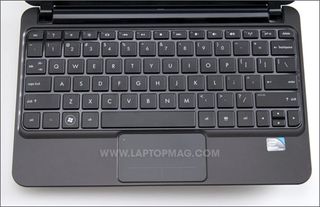
Click to enlarge
Display and Audio
The 10.1-inch display's 1366 x 768-pixel resolution meant more screen real estate than the typical netbook resolution of 1024 x 600, but it also left us squinting at some dialogue boxes and articles. On blog.laptopmag.com, for example, we had to zoom in one level to read some posts comfortably.
Viewing angles were adequate when we streamed an episode of Leverage from TNT.com, but during dark scenes we saw some color distortion at more extreme angles. Under fluorescent lights the reflections from the glossy screen were distracting, though in dim lighting the issue went away. Horizontal angles were good enough for two people to watch video side by side. Vertical angles were also acceptable. During non-video use, viewable vertical angles are wider, but users may notice that colors on websites seem a bit washed out unless you push the screen back.
Audio was impressive for a netbook. Though the bass line in Superchick's "One Girl Revolution" was weak, the Mini 210 was able to play songs with a mix of high- and mid-range instruments and vocals without distortion. With the volume at 50 percent, we were able to fill a small room, and we could hear the strings in John Barrowman's cover of "All Out Of Love" clearly at just 70 percent with a high-powered fan running in the background.
Ports & Webcam
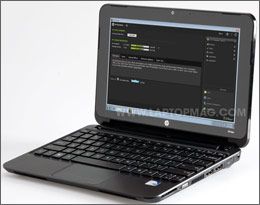
Click to enlargeThe Mini 210 has a typical spread of ports for a netbook: VGA, USB and headphone/mic combo ports on the left; Ethernet, 5-in-1 memory card reader, Kensington lock slot, and the remaining two USB ports on the right. We like that the right USB ports sit closer to the back of the system, keeping connected devices out of our way.
HP bundled the Mini 210 with ArcSoft's WebCam Companion 3, which not only allows users to record video and take pictures, but also to edit and upload them to YouTube or Snapfish directly from the program. The webcam delivered acceptable image quality when chatting over Skype, though the output was somewhat grainy. A quick adjustment of the hue setting resulted in truer colors, and upping the contrast produced richer images. Unfortunately, each time we moved our Skype companion we noticed blur, regardless of how fast or slow we were. It wasn't distracting, but it was noticeable.
Performance
The Mini 210's 1.66-GHz Intel Atom N450 CPU and 1GB of RAM delivered a score of 1,365 on PCMark05. While this is well below the netbook average of 1,466, it's very close to the scores earned by other Pine Trail systems. The Toshiba mini NB305-N410 (1,383) and ASUS Eee PC 1001P (1,384) are only ahead by about 20 marks, though the Mini 5102's score of 1,408 bests them all. The Mini 210's Geekbench score of 907 beat the average (and the Mini 5102) by more than 50 points. It's on a par with the ASUS Eee PC 1001P (908), but behind the mini NB305 (925) by 18 points.
While using the Mini 210 we experienced snappy performance when multitasking between Google Chrome, Skype, Windows Media Player, and WordPad.
The Mini 210's 5,400-rpm, 160GB hard drive didn't offer very good performance. Due to the slow 1-minute-and-22-second boot time--23 seconds above the average--it didn't surprise us that the system took 4:54 to complete the LAPTOP Transfer Test. The resulting speed of 17.3 MBps is 1.1 MBps faster than the average netbook, and on a par with the Eee PC 1001P (17.5 MBps). It also lags behind most other Pine Trail netbooks, including the mini NB305 (20.6 MBps), Acer Aspire One 532h (22.4 MBps), and the HP Mini 5102 (25.7 MBps).
It took the Mini 210 6 minutes and 15 seconds to transcode a 114MB file from MPEG-4 to AVI using Oxelon Media Converter, about 45 seconds longer than the average netbook and more than 10 seconds slower than the Toshiba mini NB305 (6:03) and ASUS Eee PC 1001P (6:02).
Broadcom Video Accelerator
The Broadcom Crystal HD Enhanced Media Accelerator is designed to excel at video playback, but its capabilities are limited. We watched trailers for The Discoverers and The Living Sea from Microsoft's WMV HD Content Showcase at both 720p and 1080p in Windows Media Player and ArcSoft's TotalMedia Theatre 3. The 720p clips averaged 48 and 47 frames per second in both players, respectively. However, the Broadcom chip worked better with TotalMedia Theatre 3 when it came to the 1080p clips. Again, they averaged 48 and 47 fps in ArcSoft's player, but in Windows Media Player they only averaged 16 and 18 fps, and playback was noticeably choppy.
The frame rates on the Mini 210 are on a par with what we experienced with the Dell Inspiron Mini 10 equipped with the Crystal HD accelerator (though that chip is a newer model), which also averaged 48 fps when playing 720 and 1080p video on the hard drive.
The Broadcom chip can also be used to improve playback of web videos using Adobe Flash 10.1 Player (Beta 3). Before we upgraded, full-screen videos didn't always play smoothly. There were noticeable hitches when we watched The Colbert Report on Hulu and Leverage on TNT.tv. Even after we updated to Adobe Flash Player 10.1, we saw mixed results when streaming video from Hulu and YouTube. At full screen, a standard definition Hulu video of The Colbert Report played at just 16 fps--a little smoother than the 14 fps with Flash 10. When we played 720p trailers for Star Trek and Avatar at full screen, the clips started out smooth but became choppy by the end, averaging 14 and 15 fps, respectively.
Playing the same clips within the website's window produced much smoother rates of 20 fps on the 720p clips and the 1080p trailer for Ninja Assassin. Compare this to Ion-powered netbooks, which we've found can easily handle full-screen 720p and 1080p video, playing the former at the maximum of 24 fps and the latter at 22 to 30 fps.
Adobe is still working out issues with full-screen playback on Broadcom-powered netbooks and, as Flash 10.1 is still deeply in beta, the bugs are understandable. Still, the HD option on the Mini 210 adds $50 to the base price, so shoppers should think twice until Adobe and Broadcom can work out the kinks.
Graphics
Like all Pine Trail netbooks, the Mini 210 includes integrated Intel GMA 3150 graphics. Though the Mini 210's 3DMark06 score of 152 is below the overall average (222), it's better than what the Dell Inspiron Mini 10 earned (138). Plus, it's on a par with the Eee PC 1001P and HP Mini 5102 (which both scored 155), and the mini NB305's 159 mark.
Unlike Nvidia's Ion GPU found on some netbooks, Broadcom's Media Accelerator isn't meant to enhance the gaming experience. When we set the HP 210's resolution of 800 x 600, we were able to campaign in World of Warcraft at just 19 fps; this score beats the Dell Inspiron Mini 10 (12 fps), but still lags far behind Nvidia Ion-powered netbooks: the HP Mini 311 achieved 37 fps at the same resolution.
Wi-Fi and Battery
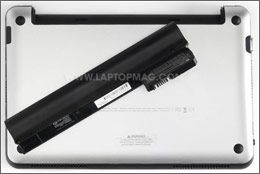
Click to enlargeThe wireless G card in the Mini 210 achieved a throughput of 18.4 Mbps at 15 feet from the router, 2.6 Mbps below the average netbook (21.0 Mbps). The Mini 210 continues to lag a little behind the competition, scoring 1.9 to 1.5 Mbps below the Eee PC 1001P (20.3 Mbps) and the mini NB305 (19.9 Mbps) at the same distance. The 50-foot score (16.4 Mbps) is also below average by 1.0 Mbps.
The Mini 210's six-cell battery lasted 6 hours and 37 minutes on the LAPTOP Battery Test, about 20 minutes longer than the average for batteries of this size. Though this is enough to get most users through a full day of on-and-off use, systems such as the mini NB305 (8:37), Eee PC 1001P (8:23), and HP Mini 5102 (10:08) leave the Mini 210 in the dust. The Dell Inspiron Mini 10 (bundled with Broadcom Crystal HD) lasted for 7 hours and 51 minutes.
Software and Warranty
HP bundles the Mini 210 with plenty of tools designed to make using this netbook more convenient, including CloudDrive (for syncing files to cloud-based storage), QuickSync (for syncing files wirelessly with a primary PC), and HP QuickWeb (a Splashtop-powered instant-on browser). Both Google Chrome and Internet Explorer browsers are preloaded, and users get Microsoft Works for free.
Multimedia software includes ArcSoft's Webcam Companion 3, TotalMedia Theatre 3, and HP's MediaStream. The last program allows users to easily connect multiple computers to stream video and music from one to another through Windows Media Player or iTunes. One interesting piece of preloaded software is the Times Reader, which uses Adobe AIR technology to deliver a rich text and multimedia reading experience of The New York Times, including video. Some articles and sections are available for free, while others are unlocked with a paid subscription.
HP also includes utilities for managing storage on the hard drive, backups and restoration, updating and downloading new HP software, and support. Trialware includes 60 days of Microsoft Office Home and Student 2007 Edition and Norton Internet Security.
HP offers a one-year parts-and-labor warranty on the netbook and 24/7 toll-free tech support, plus one-hour e-mail assistance and real-time chat via the built-in Help and Support Center. To see how HP fared in our Tech Support Showdown, click here.
Configuration and Upgrade Options
HP offers both preconfigured and configure-to-order options online, starting at just $279. The base configuration includes Windows XP Home, a 1024 x 600 display, 802.11g wireless with no Bluetooth, and a three-cell battery. Other options include 7,200-rpm hard drives (160GB or 250GB) and a wireless-N card. Our configuration comes to $384.
Though the bottom of the system shares the same pattern and smooth surface as the lid, accessing the RAM, hard drive, and other upgradeable components is possible. Simply press the two orange buttons beneath the battery to gain access; users can upgrade the RAM and hard drive without needing tools.
Verdict
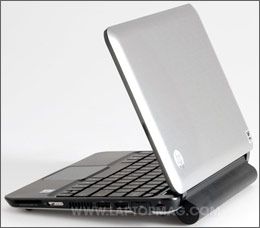
Click to enlarge
The $384 HP Mini 210 combines an attractive netbook chassis with one of the best keyboards in its class, and it offers an HD screen and high-def video playback at a reasonable price. If you don't need HD capabilities, for $85 less you can get an ASUS Eee PC 1001P, which also boasts an excellent keyboard, performs slightly better, and lasts almost 2 hours longer. In this price range we prefer the Toshiba mini NB305 because of its better ergonomics and cooler running temperatures, but if you want a little more multimedia muscle from your netbook, the Mini 210 is a worthwhile choice.
HP Mini 210 Specs
| Bluetooth | Bluetooth 2.1 |
| Brand | HP |
| CPU | 1.66-GHz Intel Atom N450 |
| Card Slots | 5-1 card reader |
| Company Website | www.hp.com |
| Display Size | 10.1 |
| Graphics Card | Intel GMA 3150 |
| Hard Drive Size | 160GB |
| Hard Drive Speed | 5,400rpm |
| Hard Drive Type | SATA Hard Drive |
| Native Resolution | 1366x768 |
| Operating System | MS Windows 7 Starter Edition |
| Ports (excluding USB) | VGA, Kensington Lock, Headphone/Mic, Ethernet |
| RAM | 1GB |
| RAM Upgradable to | 1 GB |
| Size | 10.5 x 6.9 x 1.1 inches |
| USB Ports | 3 |
| Video Memory | Shared |
| Warranty/Support | One-year limited/24/7 toll-free phone |
| Weight | 3.0 pounds |
| Wi-Fi | 802.11g |
